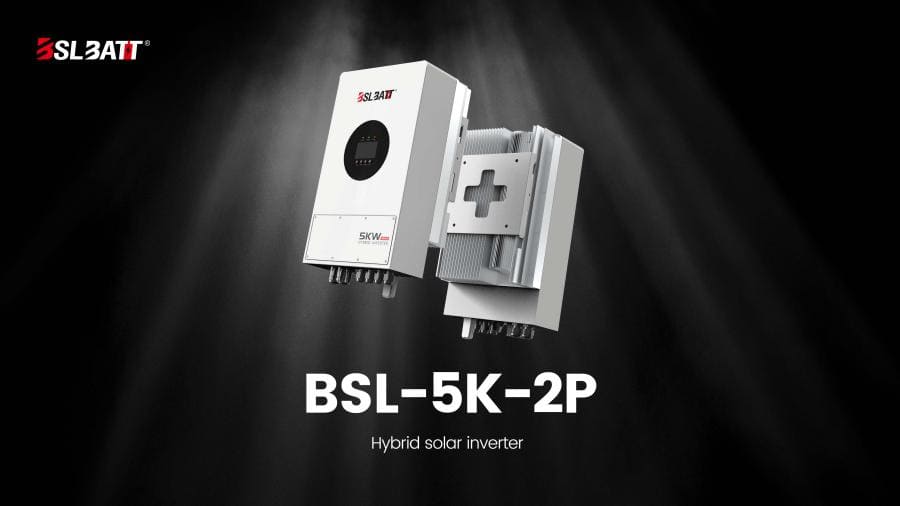Embracing the best of off grid inverter and on grid inverter, hybrid inverters have revolutionized the way we harness and utilize energy. With their seamless integration of solar power, grid and solar battery connectivity, these sophisticated devices represent the pinnacle of modern energy technology. Let’s delve into the intricate workings of hybrid inverters, unlocking the key to their efficient and sustainable energy management.
What is A Hybrid Inverter?
Machines that can make the properties of current (AC, DC, frequency, phase, etc.) change are collectively known as converters, and inverters are a type of converter, whose role is to be able to convert DC power to AC power. Hybrid inverter is mainly called in the solar power generation system, also known as energy storage inverter, its role is not only able to convert DC power to AC power, but also can realize the AC to DC and AC DC itself between the voltage and phase of the rectifier; In addition, the hybrid inverter is also integrated with the energy management, data transmission and other intelligent modules, it is a kind of high-tech technical content of the electrical equipment. In an energy storage system, the hybrid inverter is the heart and brain of the entire energy storage system by connecting and monitoring modules such as photovoltaic, storage batteries, loads, and the power grid.
What Are The Operating Modes of Hybrid Inverters?
1. Self-consumption Mode
The self-consumption mode of a hybrid solar inverter means that it can prioritize the consumption of self-generated renewable energy, such as solar, over energy taken from the grid. In this mode, the hybrid inverter ensures that the electricity generated by the solar panels is first used to power household appliances and equipment, with the excess being used to charge the batteries, which are fully charged, and then the excess can be sold to the grid; and the batteries are used to power the loads when there is insufficient power generated by the PVs, or at night, and then replenished by the grid if the two are not enough. 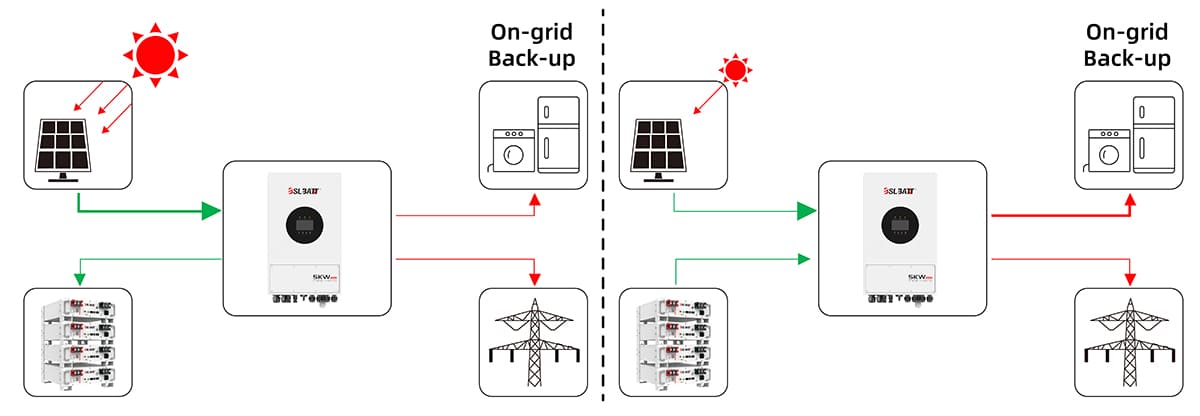 The Following are typical functions of the hybrid inverter’s self-consumption mode:
The Following are typical functions of the hybrid inverter’s self-consumption mode:
- Prioritizing Solar Energy: The hybrid inverter optimizes the use of solar energy by directing the electricity generated by the solar panels to power appliances and devices connected in the house.
- Monitoring Energy Demand: The inverter continuously monitors the home’s energy demand, adjusting the flow of power between the solar panels, batteries and the grid to meet different energy needs.
- Battery Storage Utilization: Excess solar energy that is not consumed immediately is stored in the battery for future use, ensuring efficient energy management and minimizing reliance on the grid during periods of low solar generation or high energy consumption.
- Grid Interaction: When power demand exceeds the capacity of the solar panels or batteries, the hybrid inverter seamlessly draws additional power from the grid to meet the home’s energy needs. By efficiently managing energy flows from solar panels, battery storage and the grid, the hybrid inverter’s self-consumption mode promotes optimal energy self-sufficiency, reduces dependence on external energy sources and maximizes the benefits of renewable energy generation for homeowners and businesses.
2. UPS Mode
The UPS (Uninterruptible Power Supply) mode of the hybrid inverter refers to the ability to provide a seamless backup power supply in the event of a grid power failure or outage. In this mode, the PV is used to charge the batteries along with the grid. The battery will not discharge as long as the grid is available, ensuring that the battery is always in a full state. This feature ensures uninterrupted operation of critical appliances and equipment, and in the event of a grid outage or when the grid is unstable, it can be automatically switched to battery-powered mode, and this switchover time is within 10ms, ensuring that the load can continue to be used. 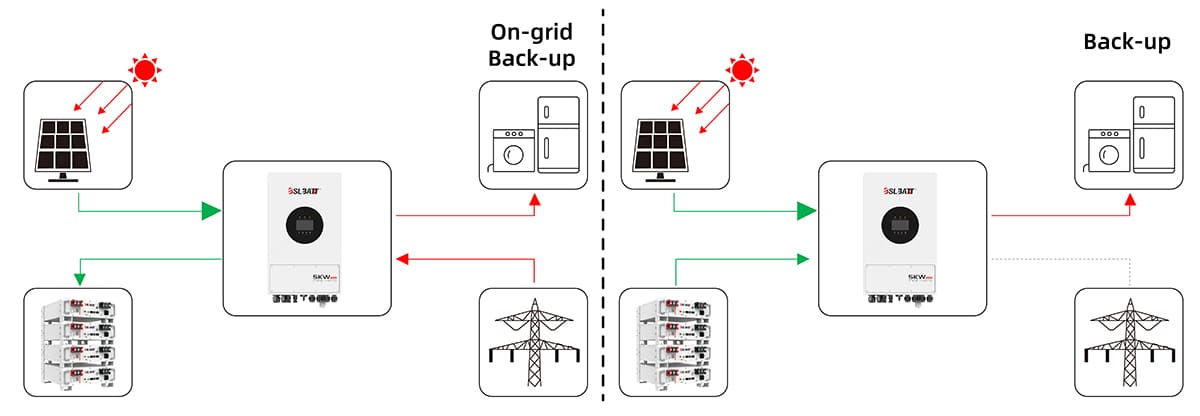 The Following is the typical operation of UPS mode in hybrid inverter:
The Following is the typical operation of UPS mode in hybrid inverter:
- Immediate Switchover: When the hybrid inverter is set to UPS mode, it continuously monitors the grid power supply. In the event of a power failure, the inverter quickly switches from grid-connected to off-grid mode, ensuring an uninterrupted supply of power to the connected equipment.
- Battery Backup Activation: Upon detecting a grid failure, the hybrid inverter quickly activates the battery backup system, drawing power from the energy stored in the batteries to provide uninterrupted power to critical loads.
- Voltage Regulation: The UPS mode also regulates the voltage output to ensure a stable and reliable power supply, protecting sensitive electronic equipment from power fluctuations and voltage surges that may occur when the grid is restored.
- Smooth Transition to Grid Power: Once power is restored to the grid, the hybrid inverter seamlessly switches back to grid-connected mode, resuming normal operation of drawing power from the grid and solar panels (if any), while charging the batteries for future standby needs. The hybrid inverter’s UPS mode provides immediate and reliable backup power support, offering homeowners and businesses peace of mind and security that essential appliances and equipment will continue to operate in the event of unforeseen power interruptions.
3. Peak Shaving Mode
The hybrid inverter’s “peak shaving” mode is a feature that optimizes energy consumption by strategically managing the flow of power during peak and off-peak hours, allowing for the setting of time periods to charge and discharge the batteries, and is typically used in scenarios where there is a large difference between peak and valley electricity prices. This mode helps minimize electricity bills by drawing power from the grid during off-peak hours when electricity rates are lower and storing the excess power for use during peak hours when electricity rates are higher. 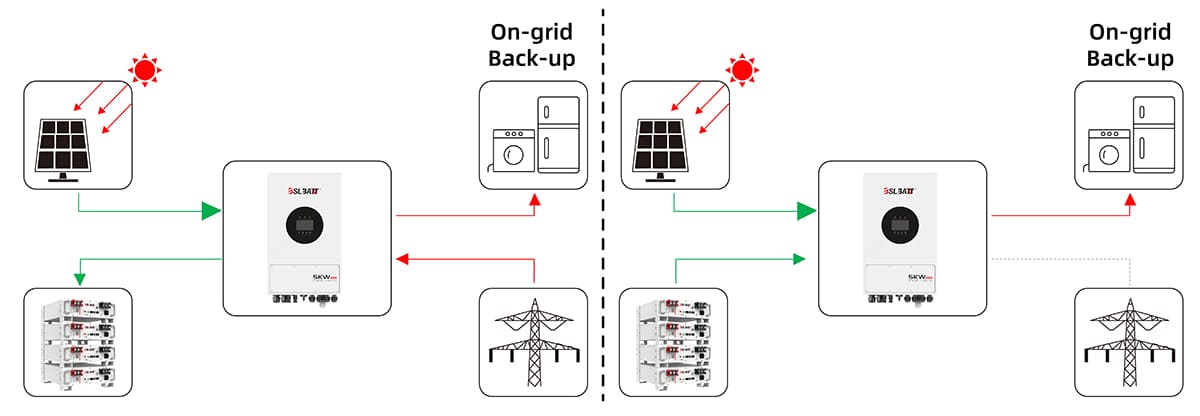 The Following is a typical operation of the “Peak Shaving and Valley Filling” mode:
The Following is a typical operation of the “Peak Shaving and Valley Filling” mode:
- Peak Shaving and Valley Filling Mode: use PV + battery at the same time to prioritize power supply to loads and sell the rest to the grid (at this time the battery is in discharged state). During peak hours when electricity demand and rates are high, the hybrid inverter utilizes the energy stored in the batteries and/or solar panels to power household appliances, thereby reducing the need to draw power from the grid. By minimizing reliance on grid power during peak hours, the inverter helps to reduce electricity costs and strain on the grid.
- Charge Valley Mode: Simultaneous use of PV + grid to prioritize use to loads before charging batteries (at this point the batteries are in a state of charge). During off-peak hours when electricity demand and rates are lower, the hybrid inverter intelligently charges the battery using either grid power or surplus power generated by the solar panels. This mode allows the inverter to store excess energy for later use, ensuring that the batteries are fully charged and ready for peak time home energy needs without relying heavily on expensive grid power. The hybrid inverter’s peak shaving mode effectively manages energy consumption and storage in line with peak and off-peak tariffs, resulting in improved cost-effectiveness, grid stability and optimal utilization of renewable energy.
4. Off-grid Mode
- The off-grid mode of the hybrid inverter refers to its ability to operate independently of the utility grid, supplying power to standalone or remote systems that are not connected to the main grid. In this mode, the hybrid inverter acts as the primary power source, utilizing energy stored in connected renewable energy sources (such as solar panels or wind turbines) and batteries.
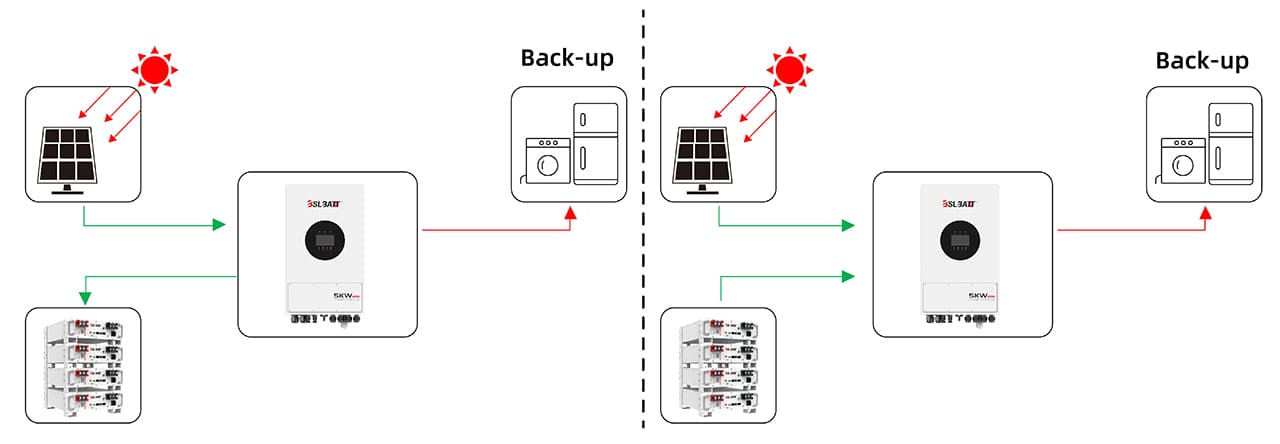 Stand-alone Power Generation: In the absence of a grid connection, the hybrid inverter relies on the energy generated by the connected renewable energy source (e.g. solar panels or wind turbines) to power the off-grid system.
Stand-alone Power Generation: In the absence of a grid connection, the hybrid inverter relies on the energy generated by the connected renewable energy source (e.g. solar panels or wind turbines) to power the off-grid system.
- Battery Backup Utilization: Hybrid inverters utilize the energy stored in the batteries to provide continuous power when renewable energy generation is low or energy demand is high, ensuring a reliable supply of power to essential appliances and equipment.
- Load Management: The inverter efficiently manages the energy consumption of the connected loads, prioritizing important appliances and equipment to optimize the use of available energy and prolong the running time of the off-grid system.
- System Monitoring: The off-grid mode also includes comprehensive monitoring and control features that allow the inverter to regulate the charging and discharging of batteries, maintain voltage stabilization, and protect the system from potential overloads or electrical faults.
By enabling independent power generation and seamless energy management, the hybrid inverter’s off-grid mode provides a reliable and sustainable energy solution for remote areas, isolated communities and a variety of off-grid applications where access to the main grid is limited or unavailable.
As the world continues to prioritize sustainable energy solutions, the versatility and efficiency of hybrid inverters stand as a beacon of hope for a greener future. With their adaptive capabilities and intelligent energy management, these inverters pave the way for a more resilient and eco-conscious energy landscape. By understanding their intricate workings, we empower ourselves to make informed choices for a brighter and more sustainable tomorrow.
Post time: May-08-2024









